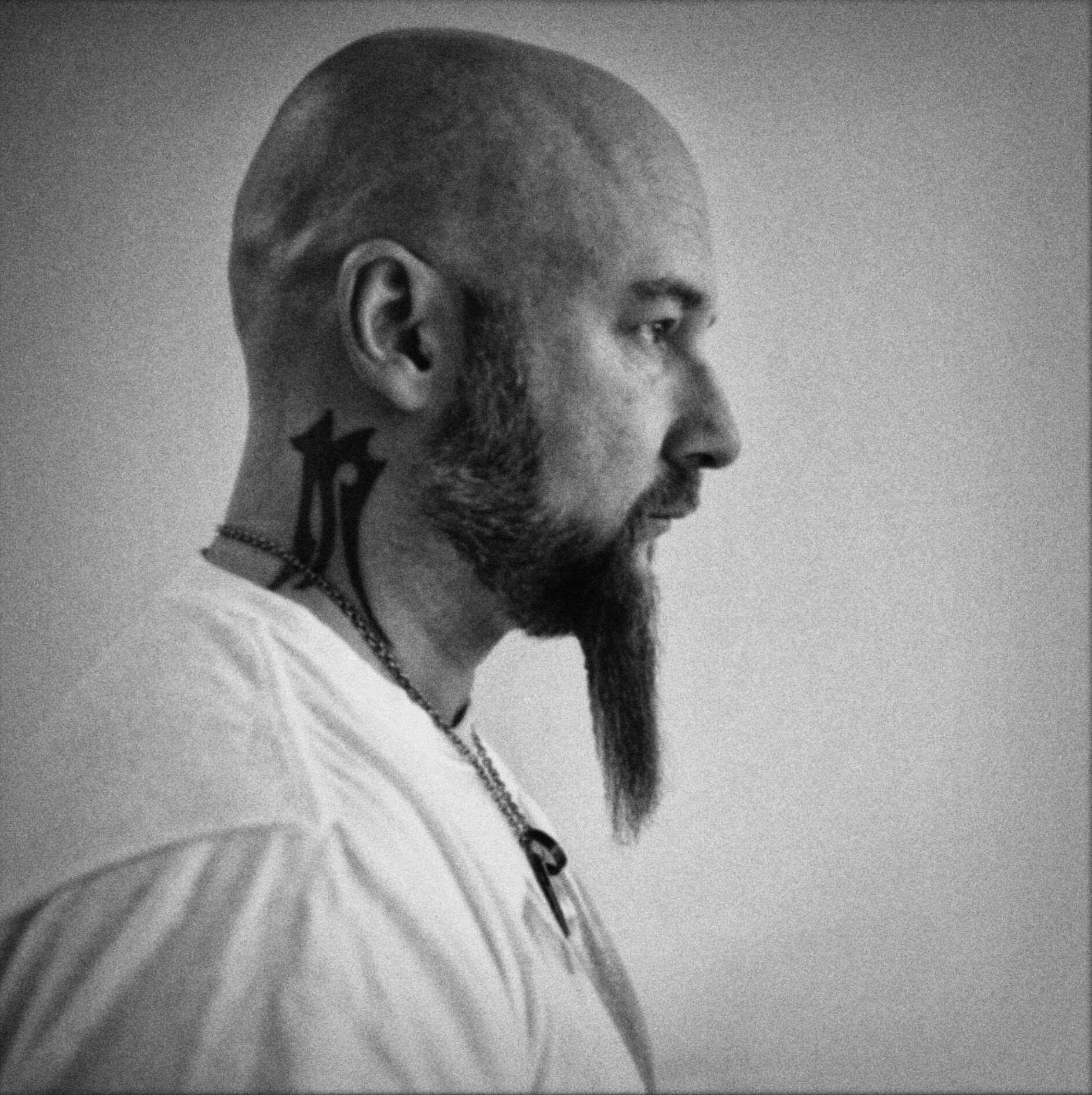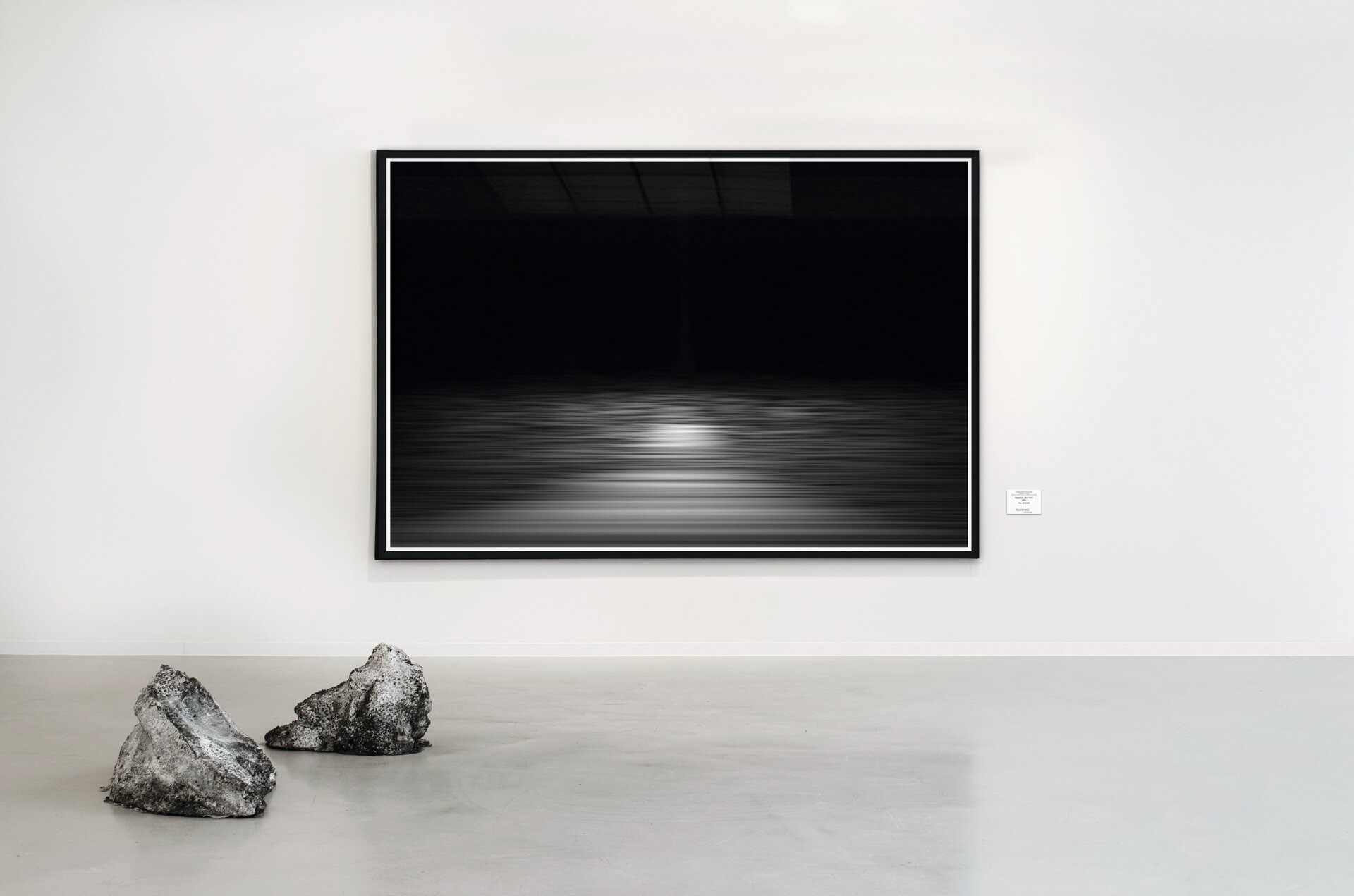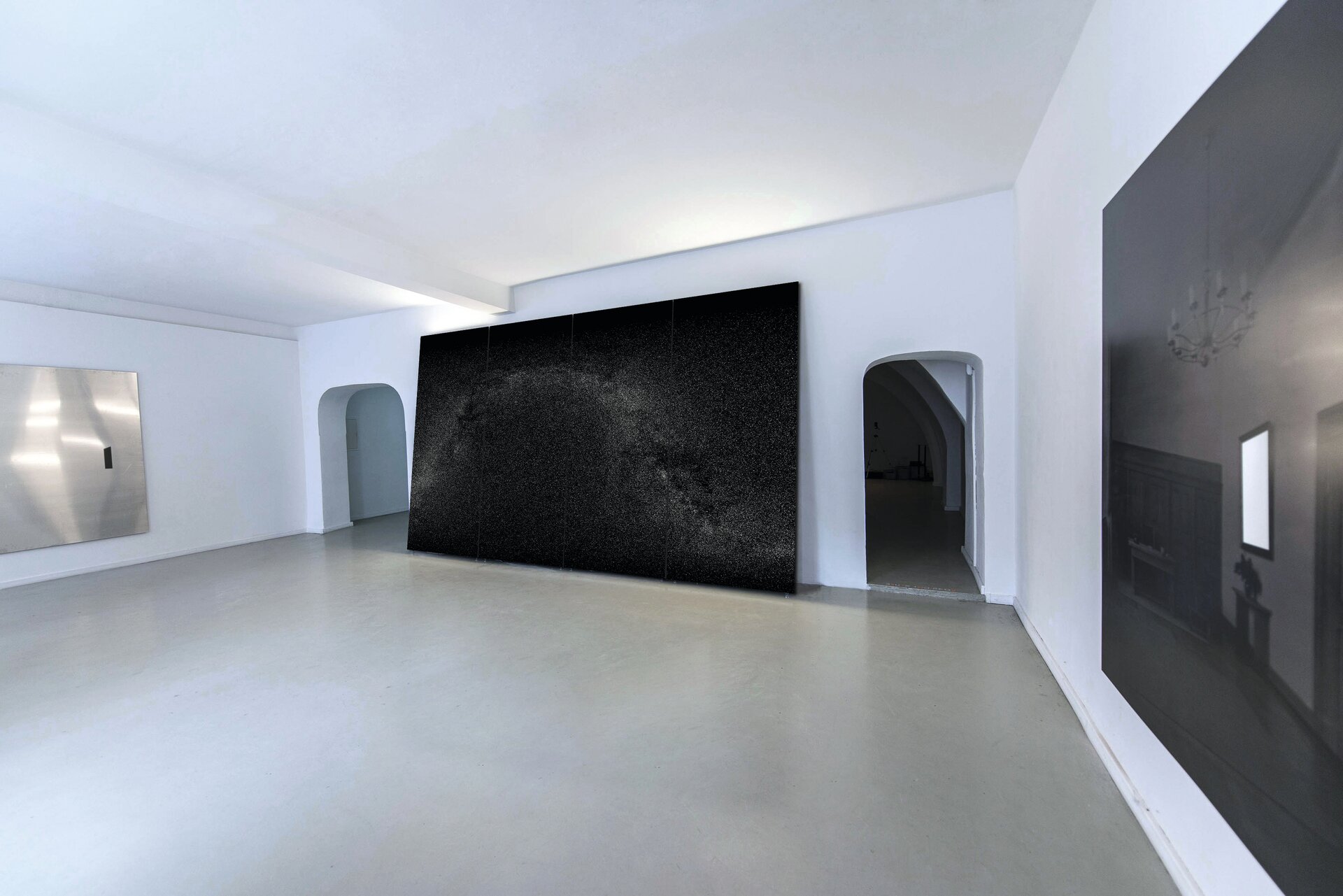
Probably the most well-known quotes about light to be found in German was written in 1850 by the Austrian lyrical poet Anastasius Grün in his poem "Pfaff vom Kahlenberg: ein ländliches Gedicht" ("Priest from Kahlenberg: A Country Ballad" in chapter 25: "In the Parsonage. Thoughts from the Dark of Night").
Translated freely from the German original:
And dives and soars again with force,
A wayfarer swaying with desire;
But, his flight to darknesses afar
Is surrounded by the radiant web of stars!
Within, the bird grows ensnarled
And perches on golden jail bars,
That encircle the world all 'round so tight,
And then sings: “In the beginning, there was light!”
The astronomical perspective on light Grün assumes in his literary work is adapted by photographer and artist Chris Tille in a completely revolutionary way — from both an artistic and a scientific viewpoint.

In 2013, American physicist John G. Cramer became the first person to convert the signature of the big bang and the following 760,000 years into sound waves and create a sound file. To do this, he used data on the cosmic microwave background from the European Space Agency's Planck satellite mission.
After two years of research, Tille discovered a way to use points of light to depict these sound waves on photographic paper and make the cosmic event visible in his artwork “Big Bang.” For the sequel to this piece, the artwork “First Light,” he used light pixels to visualize the oldest light in the world, which emerged 380,000 years after the big bang and took 13.7 billion years to reach Earth. Tille's artwork series with a scientific background also includes “10,000 AD,” a monumental image that took around 1,000 working hours to complete. Here, the artist used the exact coordinates from the Tycho II and Hipparchus star catalogs to place around 1.2 million stars by hand in their correct future positions.
New Horizon – a cosmic event
Then there's Tille's creation “New Horizon,” which visualizes the collision of two black holes 1.3 billion years ago. The gigantic cosmic event emitted 50 times more energy than the light of all the stars in the universe. When the corresponding waves reached Earth in September 2015 and were captured by LIGO (Laser Interferometer Gravitational-Wave Observatory), they confirmed Albert Einstein’s hypothesis about the existence of gravitational waves as well as his theory concerning the curvature of space-time. The event proved to be a huge scientific milestone and also provided Tille with the basis for his artwork, which features light and dark pixels that represent the volume and pitch of the sound waves.

Taken together, the images are an artistically elegant and scientifically exact representation of astrophysical facts. Tille draws on complex algorithms to create deeply meaningful works that give us an insight into the inner life of the universe — and even creation itself.
The great precision the artist employs to present astrophysical facts and his works’ extraordinary aesthetics have also won over the Max Planck Institute, where Tille works closely with the associate profession (PD) Dr. Torsten Enßlin, who heads the Planck Analysis Center (MPAC) at the Max Planck Institute for Astrophysics. The institute now frequently supplies the raw data for Tille’s projects.
In conversation with LEDVANCE, Tille explains how he became an artist while he was working as a photographer and how he discovered science as a source for his creativity.
In several of your photography projects you showed how universal, physical processes in the universe can be artistically represented using light. How did this idea occur to you?
Tille: “Having been a visual photographer for a long time, I found myself losing my creativity in some situations. It came as a shock, as I'd never experienced this before. But I very quickly realized that I had to have the courage to allow for discontinuities.

I thought about this and came to the conclusion that I'd very much like to devote more time to being an artist. I had always been fascinated by the aesthetics of the elements and the visual magic of the primal. Out of this, I developed the idea of creating artwork from sounds. My intention was to have different frequencies generate different pixels, and I soon realized I wanted to do a project that was based on data; instead of working intuitively and emotionally, I wanted my work to have a scientific basis. I tried out a lot of things but at first nothing really worked to my satisfaction.
Then, as it so often happens in life, chance stepped in. I had read about Prof. John Cramer in a scientific journal: He was the first to succeed in making the big bang audible on the basis of real data from the Max Planck Institute. Then I contacted Prof. Cramer who generously sent the sound files to me. I needed about two years after that to transform the data into art. With my work "Big Bang," I then became the first artist to have depicted the big bang on the basis of this data. From then on, I received access to additional scientific data that normally not just anyone gets to see — and could complete further projects.
How did the method of interpreting and visualizing scientific data work in “Big Bang”?
Tille: “I broke down the sound, which derived from frequency and volume, into visual impulses — that is, into light and dark pixels. A loud noise with a low frequency generated light pixels, while a quiet noise with a high frequency produced a gray pixel. The result was then printed on a large scale to ensure the best visibility.
What exactly did you do during the two years of prep work for “Big Bang”?
I had to find a way to transform sounds as precisely as possible into pixel images and transfer these images onto photographic paper. That was a long process of experimentation, and I experienced many setbacks.
